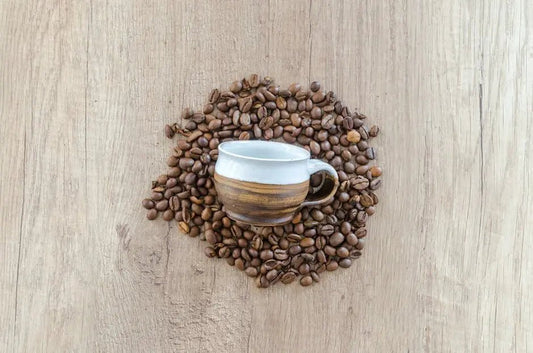Roasting coffee is an intricate dance of science and art, turning raw, green beans into the aromatic, flavorful coffee that fuels our mornings and fills our cups. This process, which involves heating coffee beans to high temperatures, brings out the oils, flavors, and aromas that define our beloved brew. In this blog, we’ll journey through the roasting process, exploring its stages, techniques, and the magic that unfolds at each step.
1. The Basics of Coffee Roasting
Coffee roasting is the process of transforming green coffee beans into the brown, aromatic beans we recognize as coffee. The objective is to enhance the beans’ natural flavors, producing a balanced, flavorful cup of coffee. Roasting requires precise control over time and temperature, as these factors significantly influence the flavor profile of the coffee.
Key Elements in Coffee Roasting:
- Time: Roasting times can vary, typically ranging from 8 to 20 minutes.
- Temperature: Roasting temperatures generally fall between 370°F to 540°F (188°C to 282°C).
- Airflow: Proper airflow ensures even roasting and the removal of unwanted smoke and chaff.
- Agitation: Keeps the beans moving to prevent uneven roasting and scorching.
2. The Stages of Coffee Roasting
Roasting coffee beans is a journey through several distinct stages, each contributing to the final flavor of the coffee.
a. Drying Stage
Temperature Range: 320°F - 330°F (160°C - 166°C)
Duration: 4-8 minutes
The drying stage is crucial as green coffee beans contain about 8-12% moisture. In this phase, the beans are heated gently to evaporate this moisture. The beans turn yellowish and emit a grassy aroma. While no significant chemical changes occur, proper drying is essential for uniform roasting in subsequent stages.
b. Browning Stage
Temperature Range: 330°F - 395°F (166°C - 202°C)
Duration: 4-8 minutes
During the browning stage, the Maillard reaction occurs, where amino acids and reducing sugars react to create complex flavor compounds. The beans turn from yellow to light brown, and the aroma becomes more coffee-like. This stage sets the foundation for the beans’ final flavor and prepares them for the first crack.
c. First Crack
Temperature Range: 395°F - 420°F (202°C - 215°C)
Duration: 1-3 minutes
The first crack is a pivotal moment in roasting. The beans’ internal pressure causes them to crack, producing an audible popping sound. This marks the transition from the drying and browning stages to the development stage. The beans expand and release aromatic compounds, and their color deepens to medium brown.
d. Development Stage
Temperature Range: 420°F - 430°F (215°C - 221°C)
Duration: 1-5 minutes
In this stage, the beans develop their final flavor profile. The roaster carefully controls the temperature and time to balance acidity, sweetness, and bitterness. The development stage continues until the roaster achieves the desired roast level, whether it’s a light, medium, or dark roast.
e. Second Crack
Temperature Range: 435°F - 450°F (224°C - 232°C)
Duration: 1-2 minutes
The second crack occurs at higher temperatures and is more subtle than the first. It signals the transition to darker roast levels. The beans crack again, and oils begin to surface. The flavors become bolder, and the roast profile shifts towards more robust, chocolatey, or smoky notes. Careful attention is required to prevent over-roasting and charring.
3. Roast Levels and Flavor Profiles
Different roast levels create diverse flavor profiles:
- Light Roast: Light brown, no oil on the surface. Preserves the beans’ original flavors, with higher acidity and pronounced fruity or floral notes.
- Medium Roast: Medium brown, balanced flavor with slight oil on the surface. Highlights the coffee's inherent flavors while introducing a richer body and sweetness.
- Dark Roast: Dark brown, shiny with surface oils. Emphasizes roasted flavors, with diminished acidity and pronounced bitter, smoky, or chocolaty notes.

4. The Roasting Equipment
Roasting coffee beans requires specialized equipment designed to control heat, airflow, and agitation:
- Drum Roasters: Feature a rotating drum where beans are roasted by indirect heat. Ideal for larger batches and consistent roasting.
- Hot Air Roasters: Use forced hot air to roast beans, providing even roasting and quick heat adjustments.
- Fluid Bed Roasters: Combine hot air and agitation for uniform roasting, suitable for small to medium batches.
5. Cooling and Storage
After roasting, the beans must be cooled rapidly to stop the roasting process and preserve their flavor. Cooling is typically done with air or water. Once cooled, the beans should be stored in airtight containers away from light, heat, and moisture to maintain their freshness and flavor.







